A long tradition of classroom design
Despite the foundation of education being anchored within the Greek civilisation and Plato with the creation of the school of philosophy followed by Aristotle, the importance of the ‘classroom’ and ‘learning spaces’ are a relatively modern concept. Over the centuries, education has been built around the mechanism and content of learning and less around the physical environment. In fact, we have to wait until the mid of 20th century to see a meaningful shift to focus on the environment and its impact on learning outcomes and wellbeing.
It’s fair to say that traditional educational environments are regimented, with a common and clear organisation and topography of the space. You start at a defined time, with ‘the’ knowledge being transmitted to a group in a largely uniform way. Within that space the learner is ‘attached’ to a chair for extended periods, with little physical mobility – this is a closed environment. Students do not have the freedom to move within or outside of designated classrooms, permission must be sought to leave and movement or fidgeting can often be punished or perceived as a sign of inattention.
Time for a change
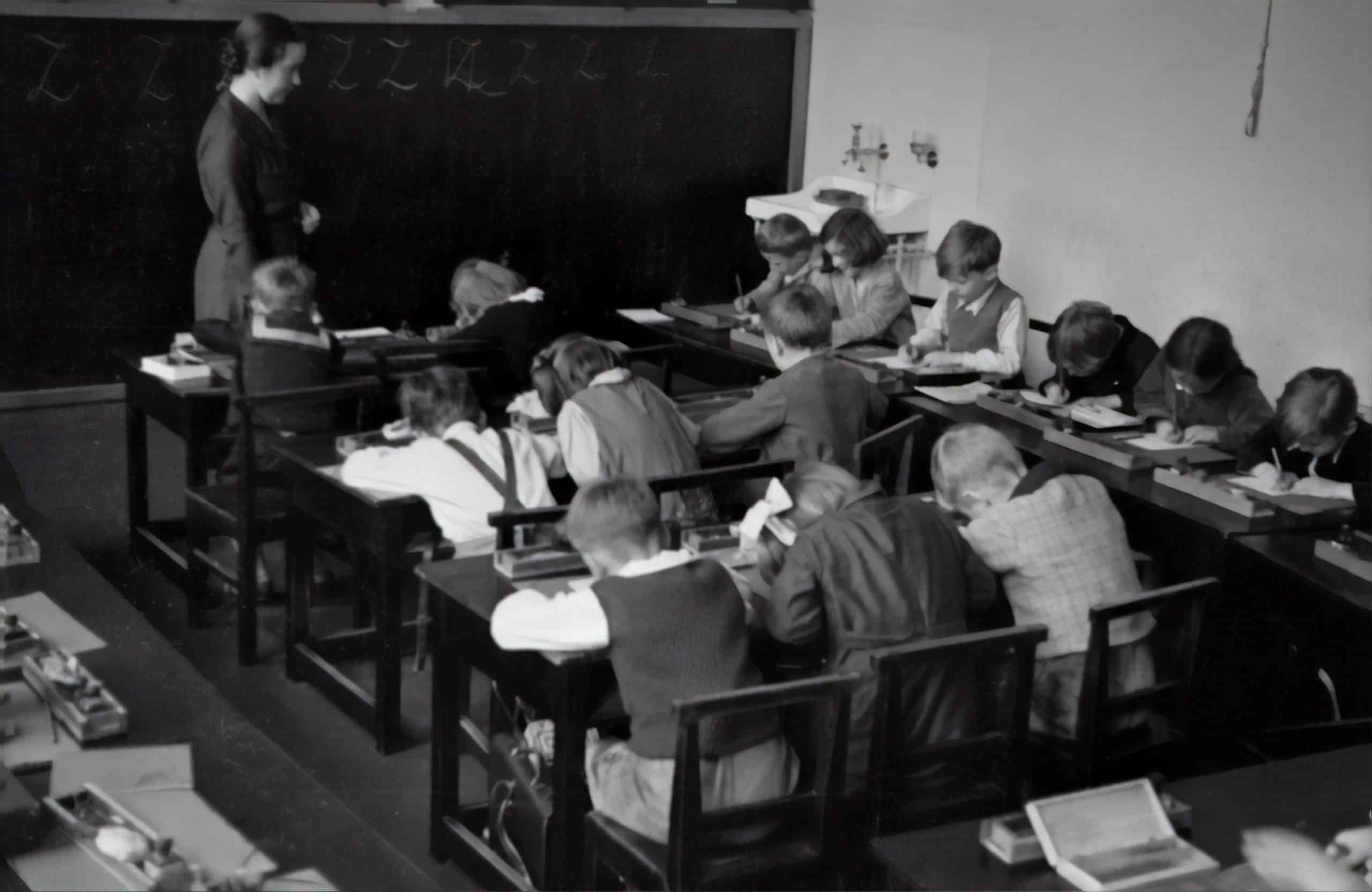
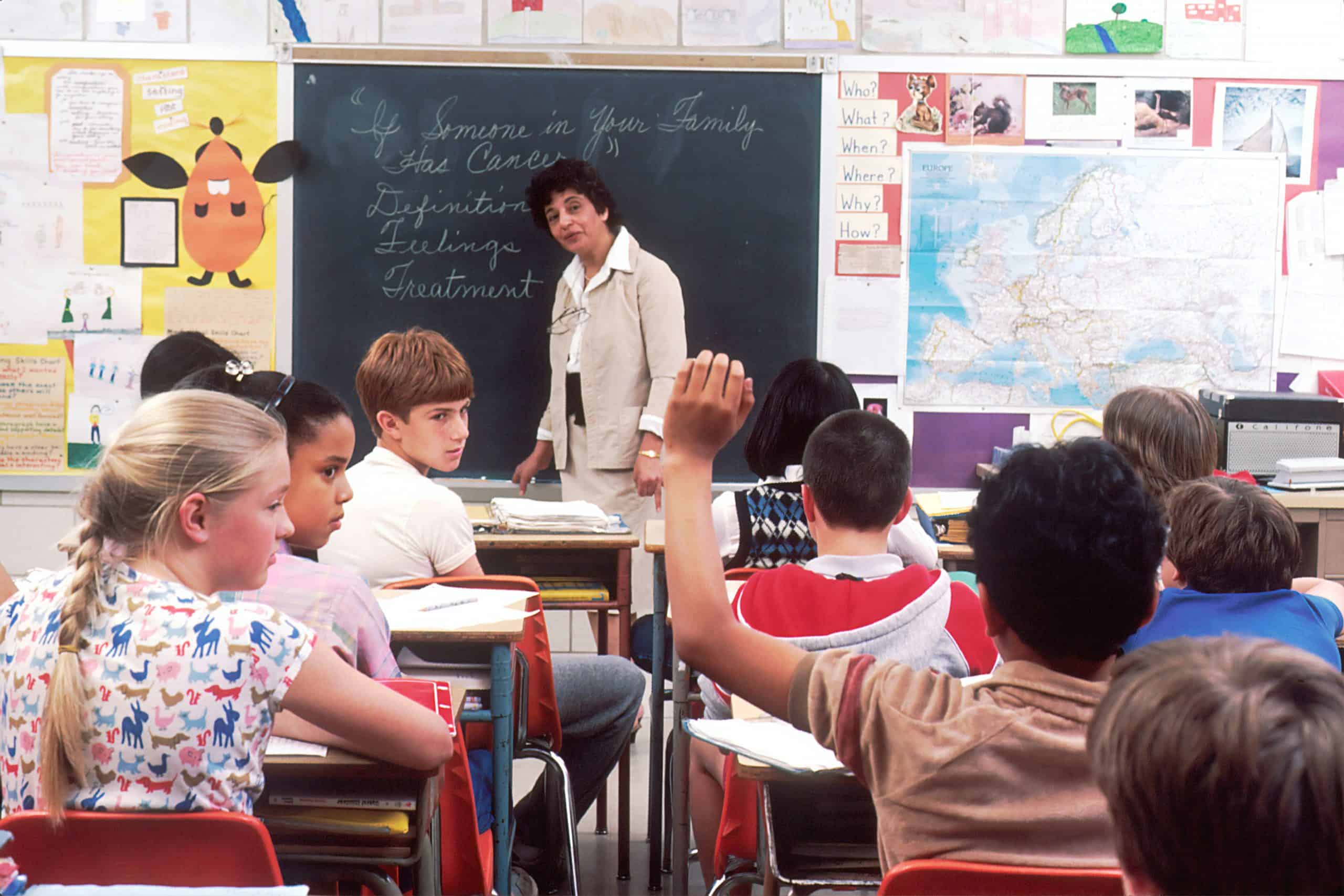
This model has been prevalent until recently. However, it has been extensively challenged across the globe with different conclusions and level of success and resulting implementations. The majority of academics, educators, architects and interior designers agree on the simple rule that learning environments should be more responsive to differentiated learning styles. And that styles of learning cannot be separated from the physical elements / the location. In other words, we can’t dissociate the space from learning and for this reason, has been described as the ‘third teacher’. This thinking has been disparate and in some regions, such as Australasia or US the evolution and adoption has been much faster than in Europe. A visit to government guidance sites and respected academic research is showing how much more advanced they are in designing different educational spaces, than for example, the UK.
It seems very simple in principle. However, the learning space is also influenced and impacted by numerous external factors, all working interdependently and influencing each other. This constitutes the ecosystem of learning.
Architecture and building design: numerous articles and books have been published on how classroom design is ‘broken’. In the UK over 60% of school buildings are well over 30 years old. This is not just so in the UK – it is the same all over Europe and the rest of the world. Advances in architecture and interior design need to be universally adopted to reflect the requirements of modern learners. For perspective, portable learning devices such as tablets were invented over a decade ago and stormed into the classrooms to support learning. And yet, we are still building new schools using a 70’s model?
Technology and the development of the digital age: the recent pandemic has highlighted the disparity in learning models across the globe. Where integrated technology-led learning plans could be seamlessly switched to fully remote and easily communicated – education continued uninterrupted. Technology is already well embedded in education – other elements such as digital screens, interactive whiteboards, displays and computers populate the classroom, and teachers use more online-based resources to support their teaching. The tethered PC will eventually become obsolete making the mobile smartphone and tablet more relevant to 21st-century learning. Technology will impact the design of the space and how we learn beyond recognition. Therefore, early adoption is critical.
Academic research and the understanding and quantification of the impact on learning. In today’s world, we can measure the loss of heat, or energy required to keep a building warm, but we can’t yet easily measure the loss of learning from poor or ineffective learning environments. Prof. Peter Barret identified through his Clever Classrooms research results that differences in the physical design of a classroom explain 16% of the variation in the learning progress of the pupils in those spaces. This is not negligible. Additional scientific and anecdotal evidence and research has driven further findings on the impact of the environment on learning outcomes. This supports the development of strategy during the design of space taking account of lighting, temperature, ergonomics, acoustics and even air quality.
Learning strategy or pedagogy evolutions and tools: this area has seen substantial evolution. Pedagogy has been impacted by the development of technology enabling a different form of learning. Research has been also fierce and allowing for broad new thinking in the development of teaching techniques and resources. Space organisation and teaching techniques should work in tandem. The ‘lecturing model’ has moved on significantly and teaching now has more tools in the box to appeal to more individualised and personalised learning.
Expectation from society to broaden skills set encourage engagement with democracy. More than ever before the jobs of tomorrow don’t yet exist (currently estimated at 85%!). It makes the work of educators more challenging and preparing the learner is not about ‘filling’ them with the knowledge that will be obsolete by the time they graduate. The development of transferrable skills is becoming the main force of educating, encouraging collaboration, social interaction with a learner–centred approach. At this stage, it is key to understand that learning is not just about youth but a future workforce that will face the same challenge of up-skilling as research has indicated.
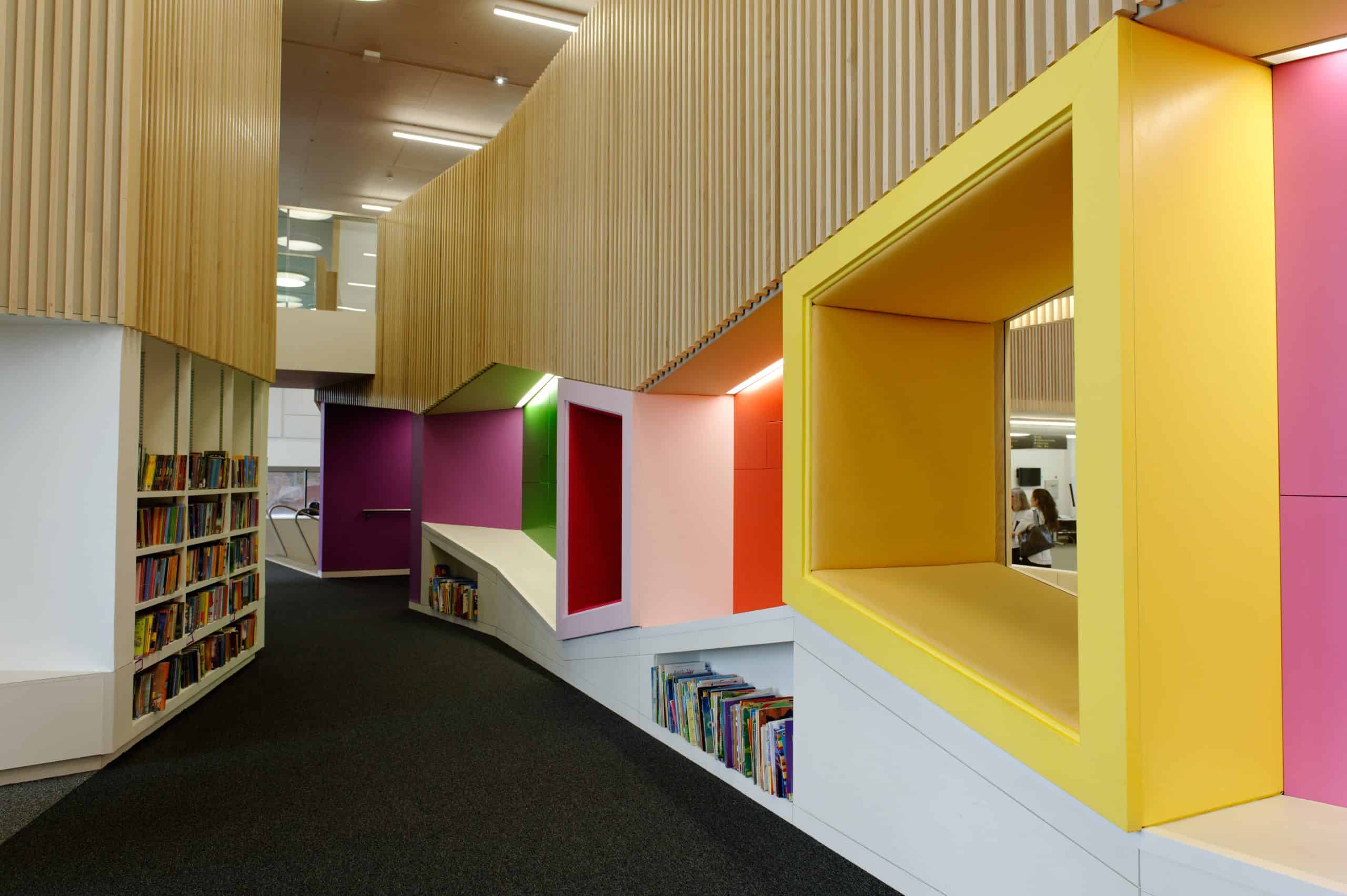
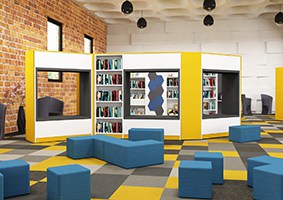
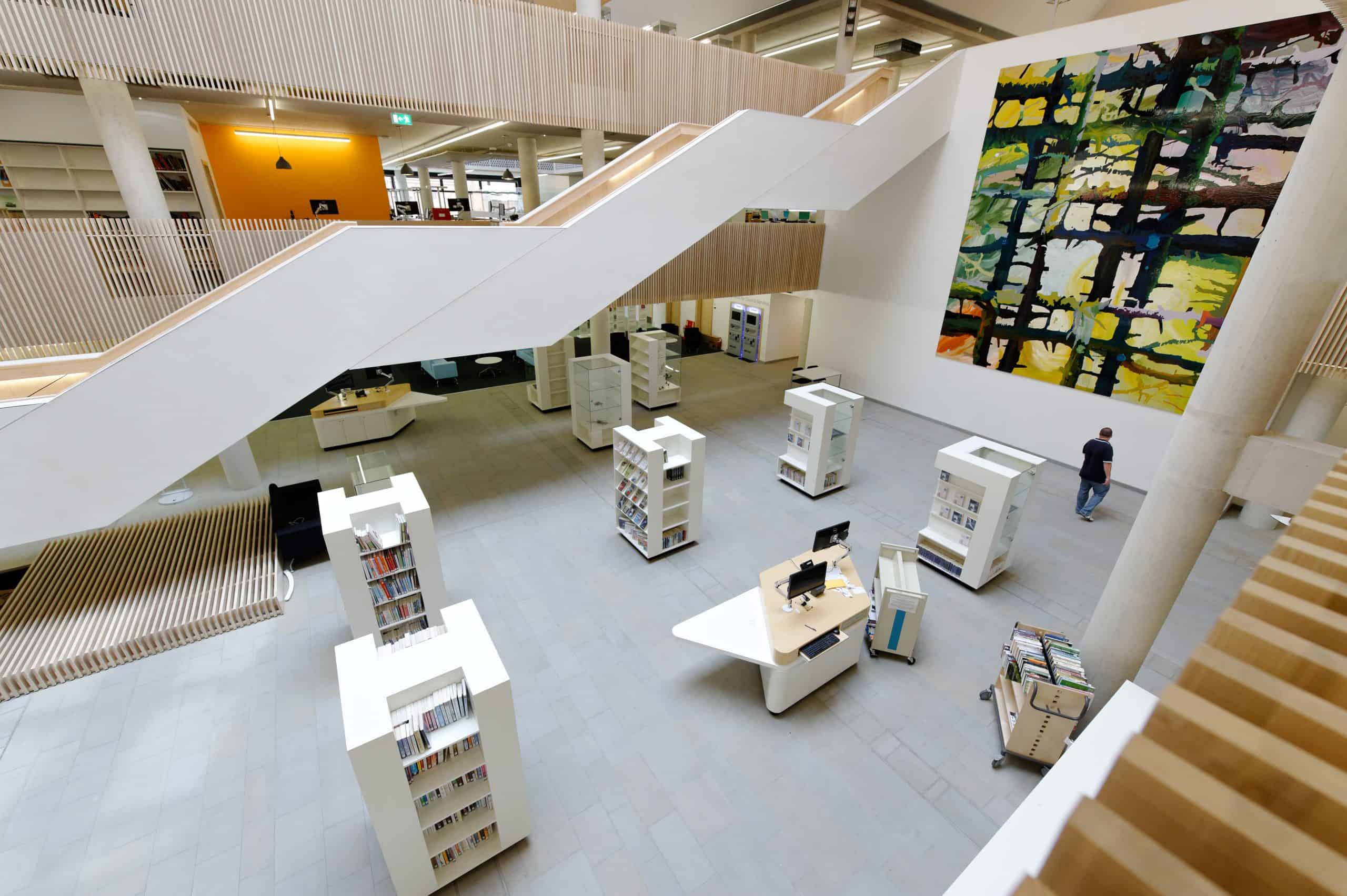
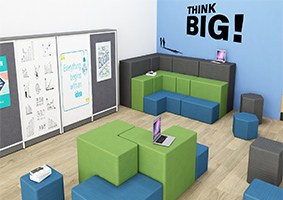
Designing future-fit spaces
These are the main factors shaping the learning space of the future. They can’t be dissociated and form the overarching output. Once taken into account it can lead to practical solutions that will impact positively teachers and students, though implementation requires a substantial level of commitment and sometimes transitioning progressively to maximise the benefits and reduce the risk of failure.
Keeping things the way they are, is maintaining a system that is broken. The 21st century requires us to deliver a better learning environment to encourage engagement and support learning outcomes.
1 ) Building flexible space: there is a departure from the classic autobus setting in the classroom and a move toward giving choice to the learner, to let them take possession of the space and personalise their learning. Different seating arrangements can increase physical movement and variation in furniture enables multiple configurations that can suit different learning (as well as teaching styles).
2 ) Multi–purpose space: flexible layouts, space arrangements, and the use of soft or tiered seating can support the zoning of the environment. Hence, the rise in the availability of ‘flexible’ or mobile furniture. Flexibility can also be translated in zoning to include group & collaborative working areas, presentation, performance or just retreating in a quiet nook.
3 ) Comfort is at the heart of learning: While flexibility is critical in organising the space, making the environment as close to ‘feeling like home’ by delivering better levels of comfort helps to improve wellbeing, confidence and autonomy. Scandinavian educators even encourage learning without shoes…!
4 ) Considering the sensorial elements such as lighting, air quality and acoustics. There is mounting convincing evidence that these environmental elements play a role. Changing the light colour might help supporting changes in rhythm and create a clear separation between lessons/learning, whilst providing acoustically enhanced spaces that encourages debate and discussion without disrupting other students.
5 ) Creating playful space: learning can be fun and it doesn’t have to be formal, regimented. Funky colours, more organic shaped furniture and architectural elements can be combined with wall graphics and differentiated flooring to create spaces that appeal to students.
6 ) Decluttering the space: only 40% of all the resources around a classroom are used within a month according to research. Decluttering, clever storage and reducing over-stimulation is critical. Conversely, over decluttering would result in a lack of stimulation – as shown in some research conducted in the Nordic region. This is about striking the right balance.
7 ) Bringing the outdoors indoors: there is a real benefit as suggested by several studies into the benefits of biophilia that highlight the importance of combining the two spaces (indoor and outdoor). This is not recent, as, at the beginning of the previous century, some UK schools already and extensively implemented with astonishing results. Using furniture and furnishing in natural colours and materials, it becomes easy to build a look and feel space that gives a nod to the outdoors.

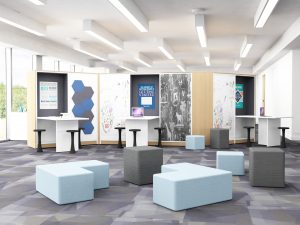
8 ) Technology enabling & virtual spaces: there is a clear upward trend where virtual reality technologies are being integrated into the learning process. An immersive experience is also enabling a wider range of tools to support teaching.
9 ) Create environments in terms of creativity as opposed to productivity. As stated early, the bus classroom configuration has been designed to build efficiency and consistency in the learning space. This topography kills the development of more creative skills and thinking that are required to succeed in the 21st century.
10 ) Make space all-inclusive: learning space should adapt to learning and learners instead of limiting it. It should adapt to every style as well as accommodating students with a learning disability. The students will need to feel safe which will encourage and stimulate learning.
The opportunity needs to be grabbed and embraced.
- This is no longer a silent revolution – it has a voice that is becoming…
Your Space. Your Design.
WF Education’s team of designers and innovation specialists understand the challenges of education spaces. Work with us to create an amazing space the inspires your teachers and engages your students.


